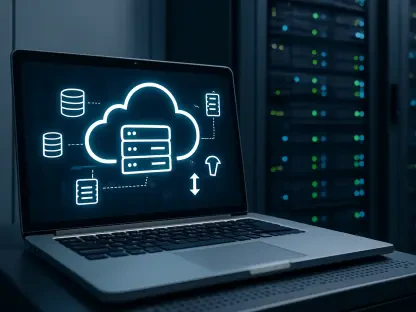Maryanne Baines, a distinguished expert in Cloud technology, unpacks the intricate cybersecurity landscape confronting Singapore businesses today. Drawing from her substantial experience in assessing cloud providers and their applications across industries, she shares insights from Rubrik Zero Labs’ latest report. The discussion navigates the rising frequency of cyberattacks, the challenges of hybrid cloud environments, and the evolving nature of threats such as ransomware and identity exploits. As cloud adoption surges, so do the complexities in safeguarding sensitive data — a topic Baines addresses with depth and clarity.
Can you explain the key findings from Rubrik Zero Labs’ report on the state of data security in 2025?
Rubrik Zero Labs’ report reveals a concerning rise in cyberattacks among Singapore organizations, with 91% of IT and security leaders acknowledging such events in the past year. This highlights the vulnerability introduced by increasingly complex IT infrastructures, especially in hybrid cloud environments. Notably, the shift to digital is both an opportunity and a risk, demanding robust data protection measures to counter emerging threats effectively.
What specific cybersecurity concerns are Singapore businesses facing due to the rise in cyberattacks?
Singapore businesses encounter a variety of cybersecurity challenges, primarily due to the surge in cyberattacks targeting both cloud and on-premises systems. This includes an increase in attack vectors such as malware, phishing, and insider threats. Businesses must navigate these threats to protect sensitive information and maintain operational integrity.
How has the rapid adoption of cloud technology impacted data security for organizations in Singapore?
The rapid adoption of cloud technology has fundamentally reshaped data security concerns for many Singaporean organizations. As businesses transition their workloads to the cloud, they face new security challenges that demand more sophisticated protection frameworks. This shift also underscores the difficulty in maintaining centralized visibility and control over diverse environments, which can lead to vulnerabilities.
Can you elaborate on the challenges associated with hybrid cloud environments?
Hybrid cloud environments present unique challenges, particularly in maintaining data security. Organizations must manage data privacy, ensure compliance, and address the lack of centralized visibility, which makes it harder to monitor and secure data consistently. These environments require comprehensive security strategies that adapt to the diversity and dynamism of cloud operations.
What are some common attack vectors that Singapore businesses are encountering?
Singapore businesses frequently grapple with several attack vectors, including malware, phishing, and breaches of cloud or SaaS environments. Insider threats also represent a significant issue, often linked to compromised credentials. These attack vectors exploit vulnerabilities across systems, demanding proactive defense measures.
How frequently do cyberattacks occur for organizations in Singapore, according to the report?
The report indicates that cyberattacks are alarmingly common, with nearly 20% of organizations facing more than 25 attacks in 2024 alone. This equates to an average of at least one attack every two weeks, underscoring the persistent threat landscape that businesses must contend with regularly.
What are some of the consequences businesses face after a cyberattack?
After a cyberattack, businesses often face severe repercussions, such as reputational damage and loss of customer trust. There’s also the burden of increased security costs and, in some cases, leadership changes at the executive level, highlighting the profound impact of cybersecurity incidents.
How are emerging technologies like AI complicating data protection efforts?
Emerging technologies like AI add layers of complexity to data protection due to the sophisticated nature of threats they introduce. AI can be a double-edged sword, used both as a tool for securing data and for launching advanced cyberattacks, increasing the complexity for defenders to keep pace.
In what ways are AI, cloud, and data complexity adding to the security burden?
AI and cloud technologies exponentially increase the volume and complexity of data, requiring more robust security frameworks to manage. The dynamic nature of these environments makes it challenging for organizations to maintain a secure posture, compelling them to adopt new strategies and tools to address data protection effectively.
Why is data security in hybrid environments listed as a significant challenge by IT leaders?
IT leaders view data security in hybrid environments as a major challenge due to the inherent complexity in managing disparate systems. Ensuring consistent security controls and visibility across various platforms is difficult, leading to potential security gaps that attackers could exploit if not properly managed.
What types of sensitive data are often classified as high-risk?
High-risk sensitive data typically includes personally identifiable information (PII), such as Social Security numbers and phone numbers, as well as intellectual property and source code. This classification emphasizes the need for stringent security controls to protect against unauthorized access or leaks.
Can you discuss the evolution of ransomware and identity-based threats?
Ransomware has evolved to become a more prevalent threat, with organizations observing its sophistication increasing over time. Identity-based threats are also on the rise, particularly as businesses utilize multiple cloud or SaaS platforms. Attackers use these vulnerabilities to maneuver within systems, often escalating attacks by exploiting weaknesses in identity management.
What percentage of organizations affected by ransomware end up paying the ransom?
A staggering 95% of organizations hit by ransomware report paying the ransom. This emphasizes the urgent necessity for robust backup systems and recovery plans to mitigate such desperate measures, which often only encourage further criminal activity.
How are backup systems compromised during ransomware attacks?
Backup systems are often partially or fully compromised during ransomware attacks, as threat actors aim to disable recovery options that organizations might rely on. This underscores the need for diverse, protected backup strategies that keep recovery paths open even during an attack.
How do identity threats evolve alongside the spread of cloud services?
As cloud services proliferate, identity threats evolve by exploiting the increasing number of user credentials involved. Attackers target these identities to gain unauthorized access across platforms, navigating weaknesses in identity and access management to deepen their impact.
What role do insider threats play in cybersecurity risks for Singapore businesses?
Insider threats are a significant concern, often linked to compromised credentials or the misuse of access by employees. These threats can arise from negligence or malicious intent, requiring organizations to implement stringent access controls and monitoring to detect and prevent such risks.
Why is a data-first security approach becoming necessary in today’s threat landscape?
A data-first security approach is crucial as traditional perimeter defenses become insufficient in a rapidly evolving threat environment. This approach emphasizes the direct protection of critical data, irrespective of its location, thereby ensuring robust defenses against a wide array of threats posed by hybrid environments.
What strategies should organizations adopt to safeguard critical data in hybrid cloud environments?
Organizations should adopt comprehensive strategies that include robust encryption, consistent monitoring, and rigorous access controls tailored to hybrid cloud environments. These measures help ensure that data remains secure against unauthorized access and breaches.
What is your forecast for the future of cybersecurity?
Looking ahead, the cybersecurity landscape will likely become increasingly complex, with AI playing a central role both in defense and in emerging threats. Organizations must stay agile, continuously updating their security strategies to anticipate evolving risks and safeguard their critical digital assets effectively.









